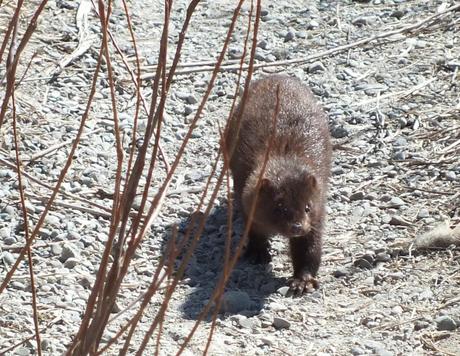
This past weekend, Bob and I spent one afternoon exploring a marsh near Mississauga. We barely had gotten underway when we spotted a member of the Weasel Family, a Mink, coming towards us, totally unconcerned about our presence in its habitat.
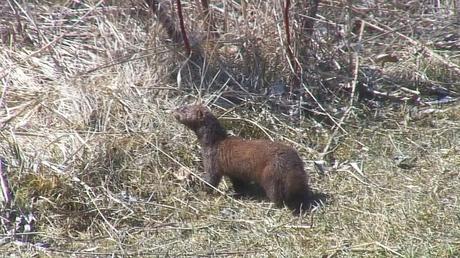
It carried on down the trail past Bob and I, obviously on a mission.
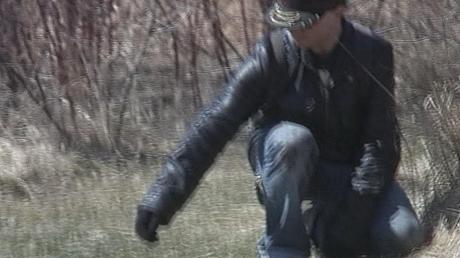
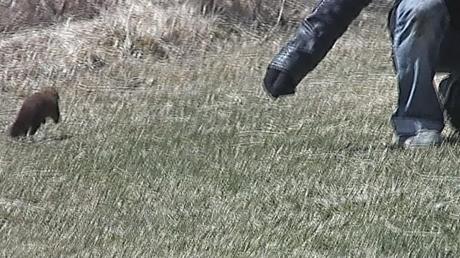
Another visitor to the area, who obviously didn’t know what he was dealing with, squatted down and encouraged the mink to come to his outstretched hand. Minks, like all members of the Weasel family, are carnivores that mostly eat small mammals, even rabbits and gophers, crushing their prey’s skulls with their canines. Good thing the mink didn’t decide to sample this man’s fingers!
As you see in our video, the Mink was certainly not concerned about humans in its territory.
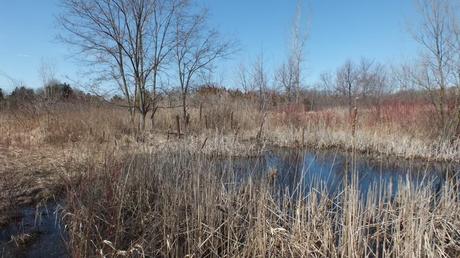
The mink continued on its way, so Bob and I followed it and were surprised when we came to a small pond. It was tucked out of sight a short distance from the walking trail, and to the casual observer, the pond remained unseen.
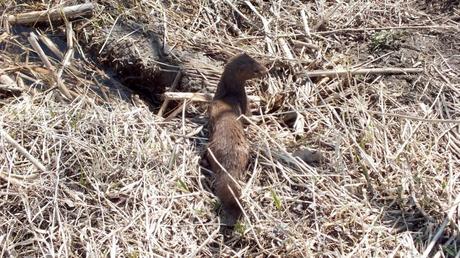
Once at the pond, the mink made a bee-line for a tunnel into the pond’s bank, into which it quickly disappeared. Bob and I mistakenly thought that the tunnel was the mink’s home, but seconds later, the mink reappeared and continued along the edge of the water scanning left and right as it went on its way.
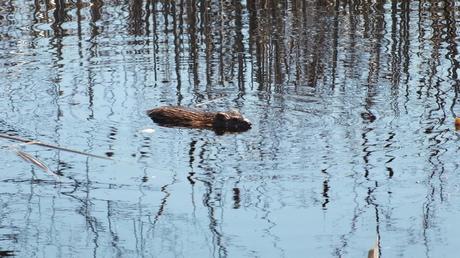
It was right about then that a muskrat popped to the surface of the water in the middle of the pond. A clearer picture was coming into view. We realized that the tunnel at the side of the pond was the muskrat’s den, and the mink had been hoping to find the muskrat at home.
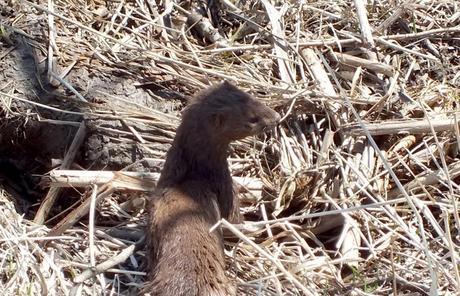
Muskrat families build nests to protect themselves and their young from cold and predators. In a pond such as this, they burrow into the bank but also maintain an underwater entrance. The opening to the muskrat den is to the left of the mink in this photo.
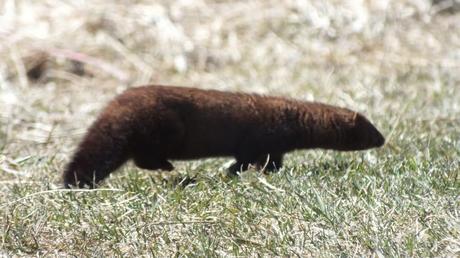
The mink has a small head with long whiskers, a long body and neck, and short legs. Their long, slender bodies enable them to follow their prey into burrows, which is what we had just witnessed.
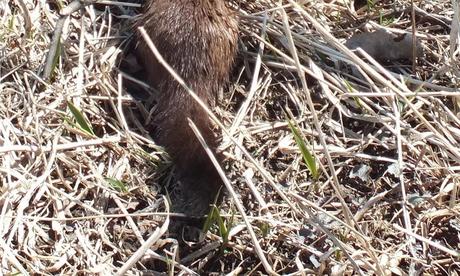
A mink’s tail is fully furred and slightly bushy, and their fur is soft and thick.
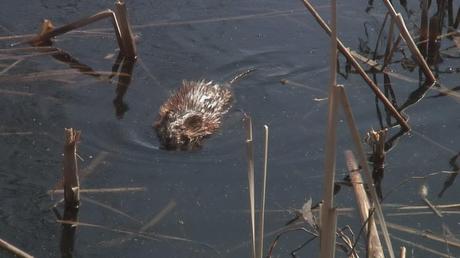
Bob and I stood by silently while the muskrat plied the waters of the still pond. Meanwhile, the mink circled to the far edge of the water whereupon we heard a large splash. It turned out that there were two muskrats living in that small body of water, and they both landed up being spooked by the mink.
As you see in our video, the mink wasted no time moving in and trying to capture one of the two muskrats.
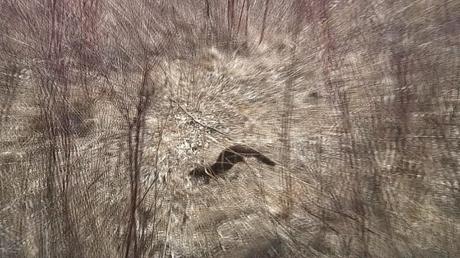
The mink was always on the move, which explains why they, as a species, consume about 40 percent of their body weight in food every day.
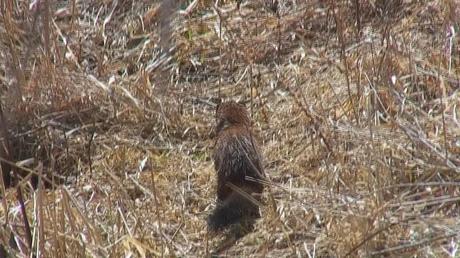
Having failed to nab a muskrat for its next meal, the mink moved off through the tall, dry stalks of last year’s bulrushes in search of easier prey.

So Bob and I turned our attention to the two muskrats maneuvering their way around the stalks of bulrushes sticking up out of the water. Muskrats are medium-sized, semi-aquatic rodents that get their names from either the Algonquin or Abenaki nation (muscascus or moskwas).
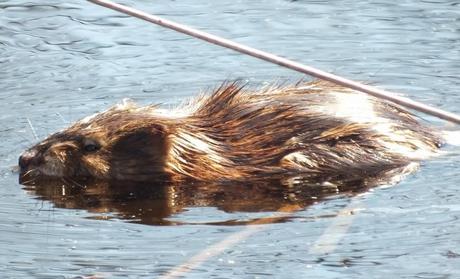
Muskrats are much smaller than beavers but bear a remarkable resemblance to them. They are covered with short, thick fur that has two layers, helping to insulate them against cold water.
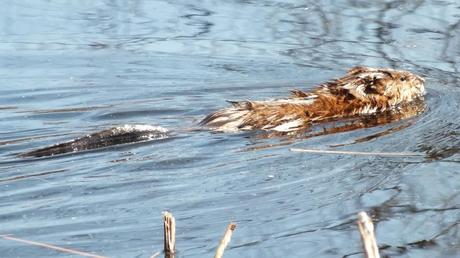
Muskrats have long tails covered with scales rather than hair and, to aid them in swimming, the tails are slightly flattened vertically, a trait that is unique to muskrats. They, like beavers, will slap their tails on the surface of the water as a warning signal to others.

An adult muskrat can grow to a length of 28 inches, with the tail accounting for almost half of that length.
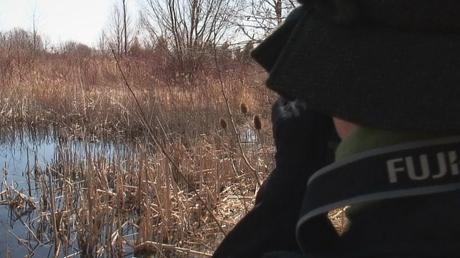
Bob and I were soaking up the solitude of the peaceful location as red-winged blackbirds flitted amongst the shrubs and crows kept watch from a nearby tall tree.

Even two painted turtles blissfully sat soaking up the sun’s rays, rejoicing in the warmth on their backs. They had just spent a long winter of hibernation in the muddy bottom of the pond. Painted Turtles rely on warmth from their surroundings, and therefore are active only during the day when they bask for hours on logs or rocks.
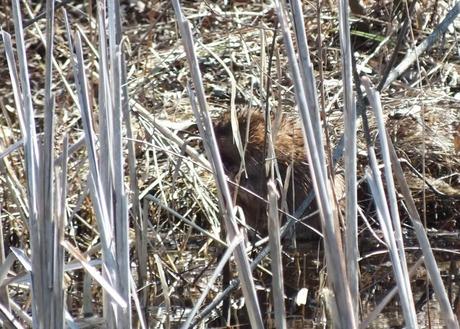
For periods at a time, one or both of the muskrats emerged from the calm waters to bask in the sunshine on the opposite shore. They put a lot of effort into grooming each other, all the while chattering in soft chirps and whines.
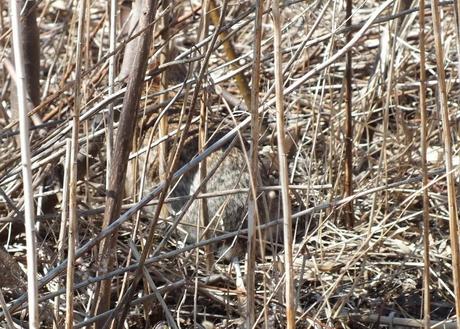
Suddenly, the silence was broken when I heard behind me the crashing and rustling of myriad stalks of brittle bulrushes. I couldn’t imagine what was making the noise. As I turned to look, there I saw a rabbit running for its life, hotly pursued by…you guessed it…the mink. I’m not sure whether or not our presence threw off the chase, but the rabbit hunkered down in some dry stalks, and the mink changed focus, once again hastening over to the muskrat’s den for another look.

The next thing you know, the mink was making tracks for the far side of the pond where the two muskrats were hanging out. High drama and danger were afoot as the mink set its sights on one of the muskrats for dinner. A huge splash of water ensued leading us to believe that the muskrats had outwitted the mink once again. They were on high alert and managed to slip beneath the silvery surface of the water for at least the second time that day.
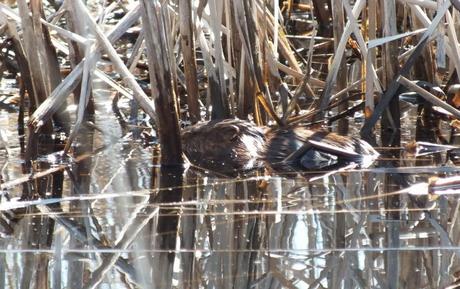
As the surroundings settled into quietude once again, one of the muskrats laid low in the water, out of harm’s way.
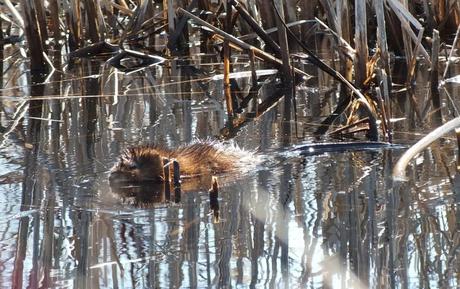
With the pandemonium of the chase now a distant memory, this muskrat ventured into deeper water.
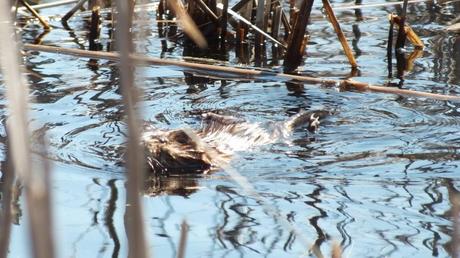
Able to now relax, the muskrat lazily propelled itself with outstretched legs, displaying to us the sharp claws on one hind foot. Their sharp claws enable them to handily dig their burrows into soft muddy banks, while the partially webbed hind feet make swimming easier .
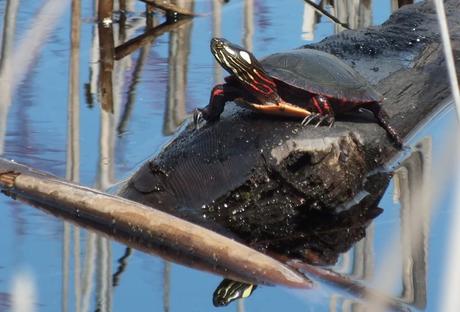
Using its sharp claws to climb onto a log, this painted turtle once again escaped the murky depths of the riled up water. Its webbed feet are also perfectly suited for swimming, and the females use their claws to dig nests for their eggs in the springtime.

With the afternoon waning, Bob and I quietly departed the swampland where we had discovered such a wealth of biodiversity and witnessed firsthand intrigue the likes of which most people never see. It was awesome!
Checkout some of our other wildlife sightings:
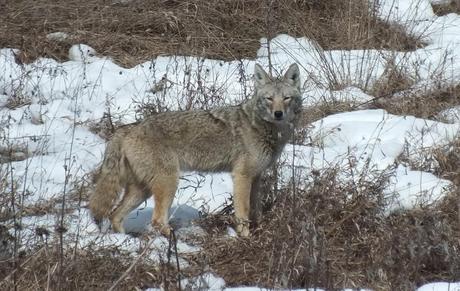
Wild Coyote Sighting in Claireville Conservation Area
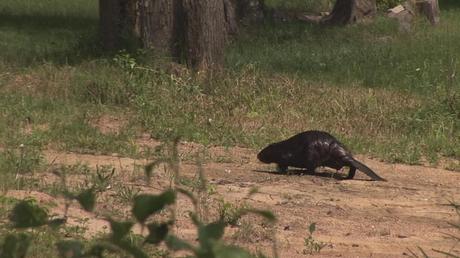
Beaver Sightings from the Green to the Oxtongue River
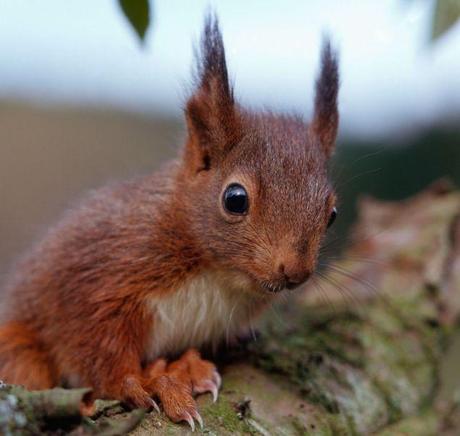
Red and Grey Squirrels in Canada and Ireland
Frame To Frame – Bob & Jean
Mink Hunts Muskrats in Ontario Swamp is a post from: Frame To Frame

